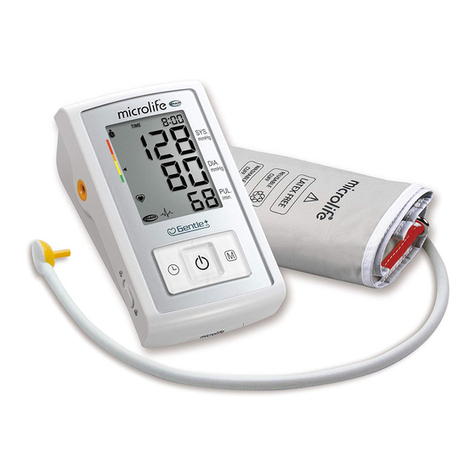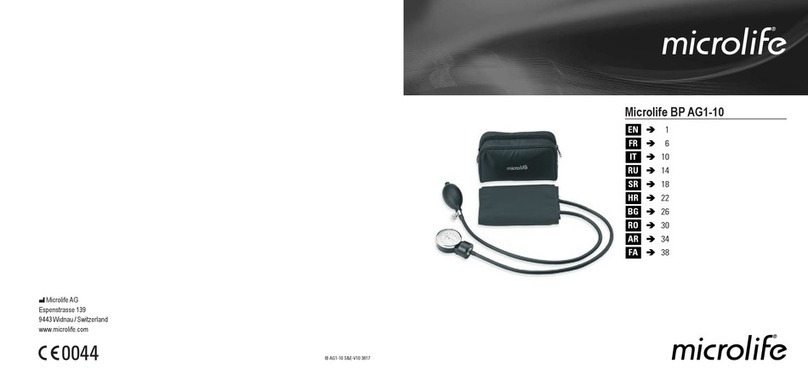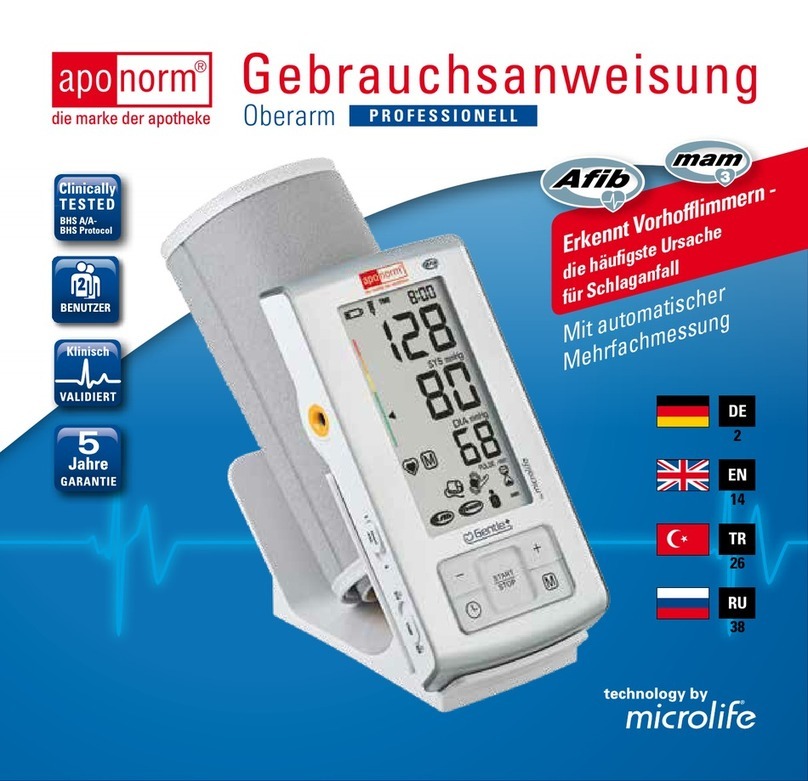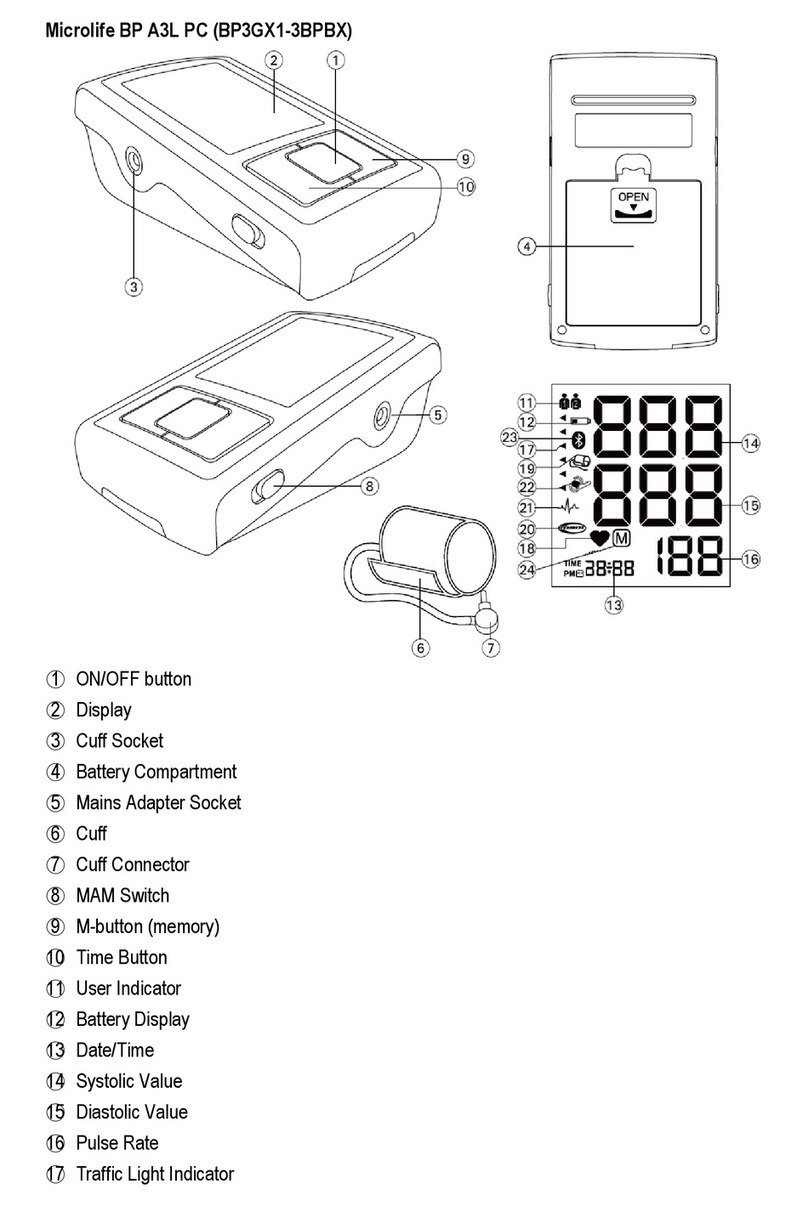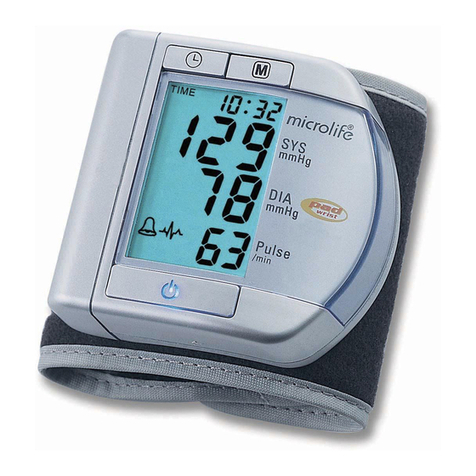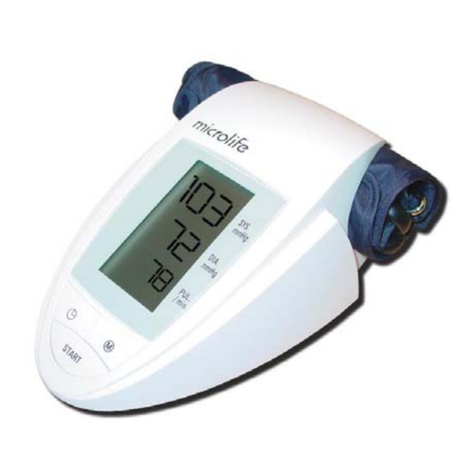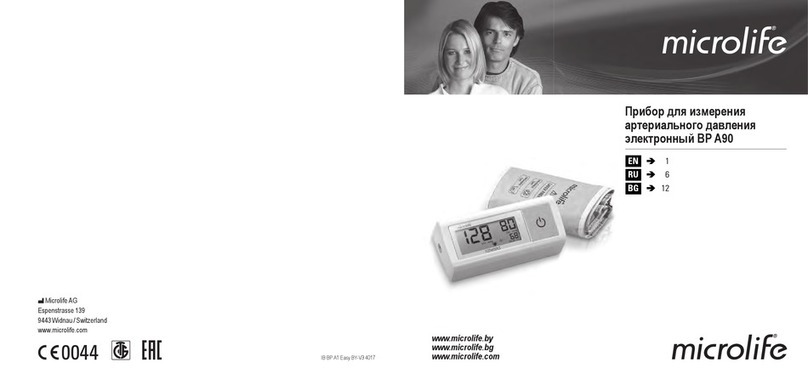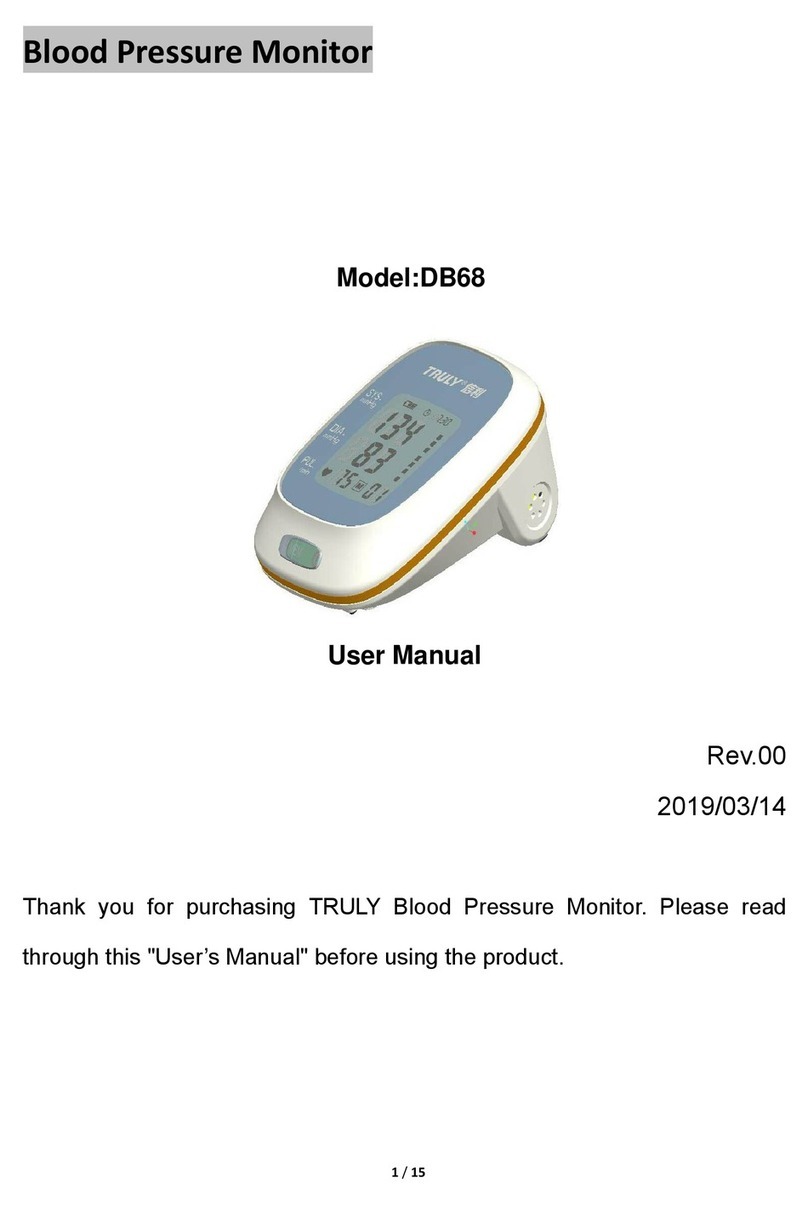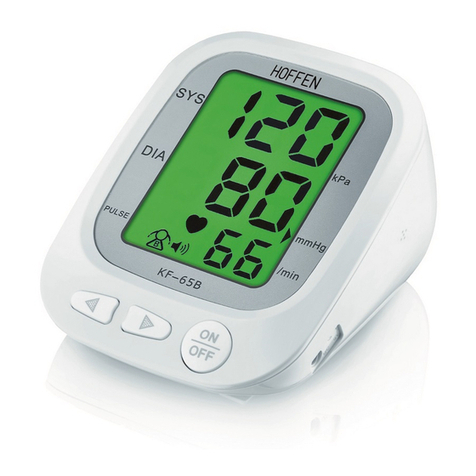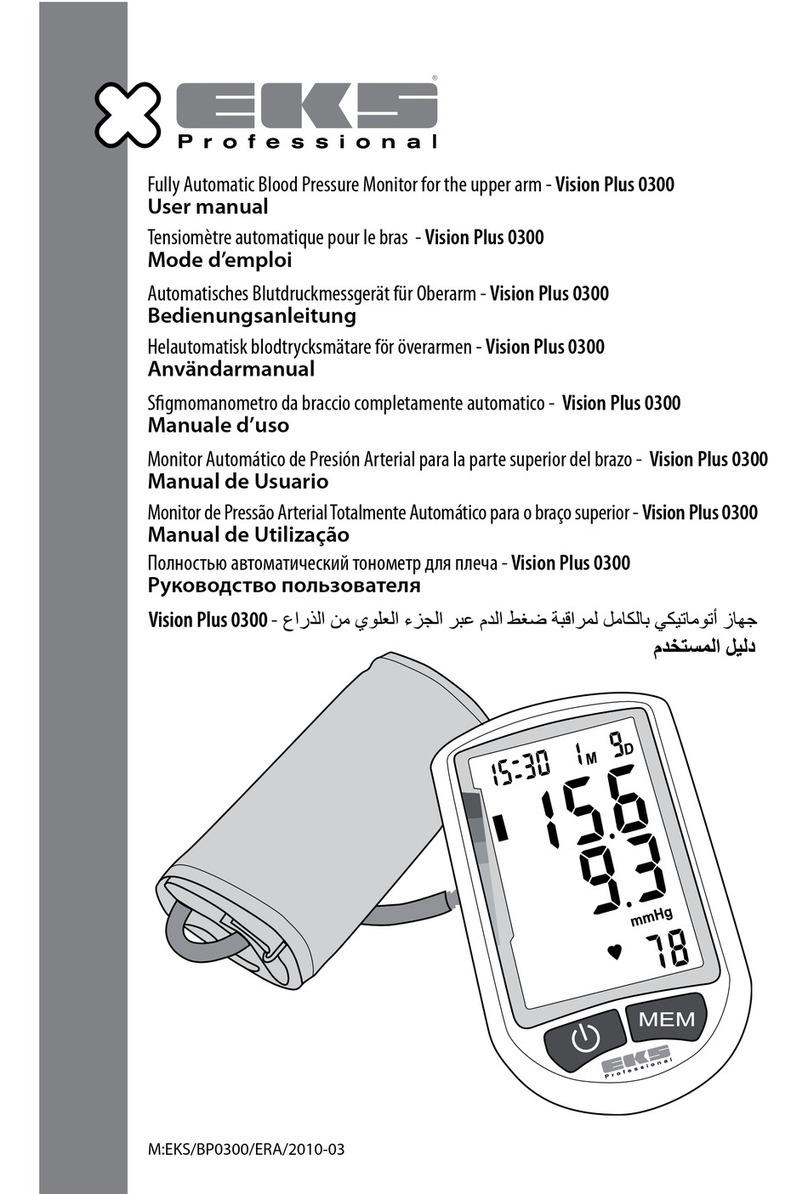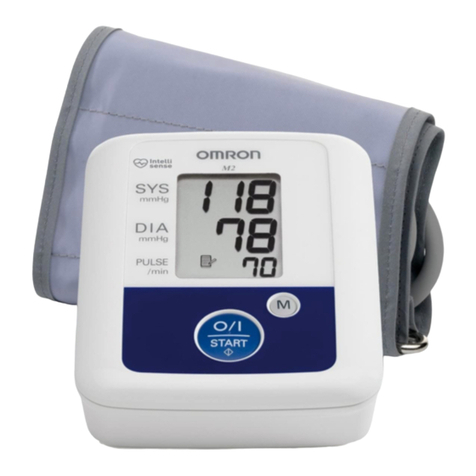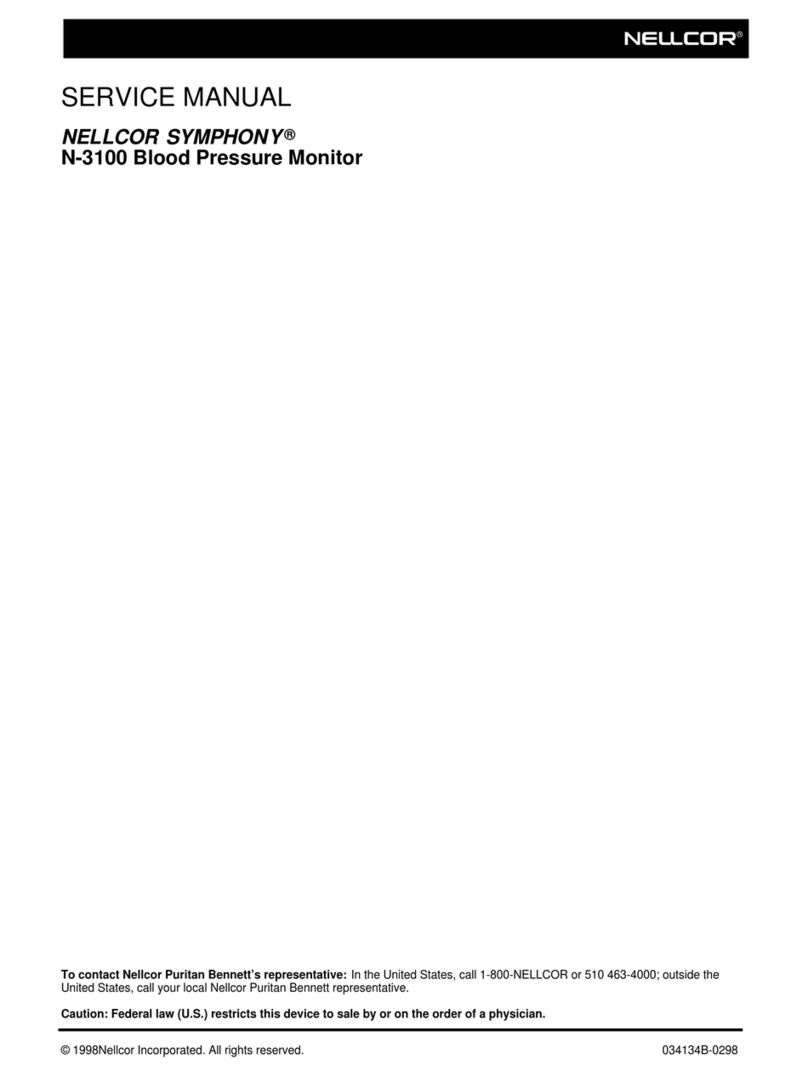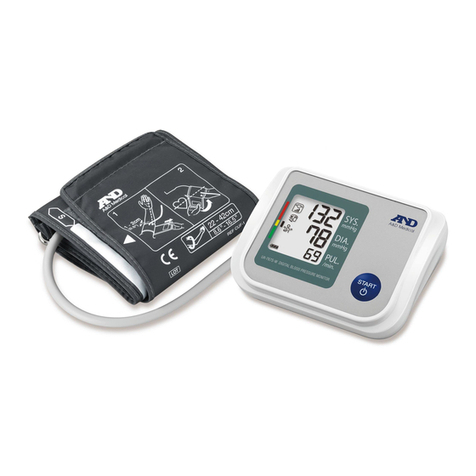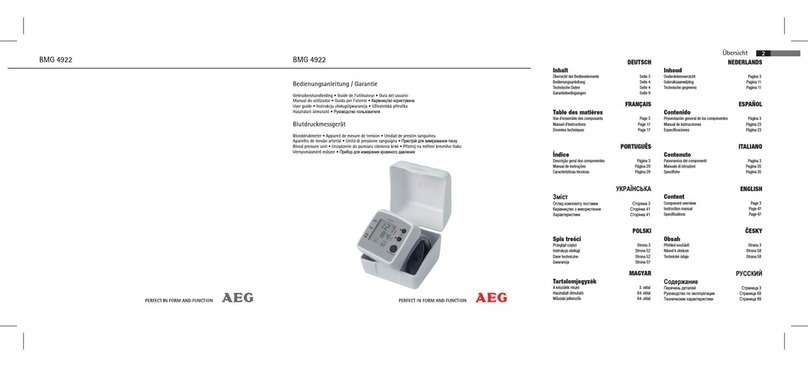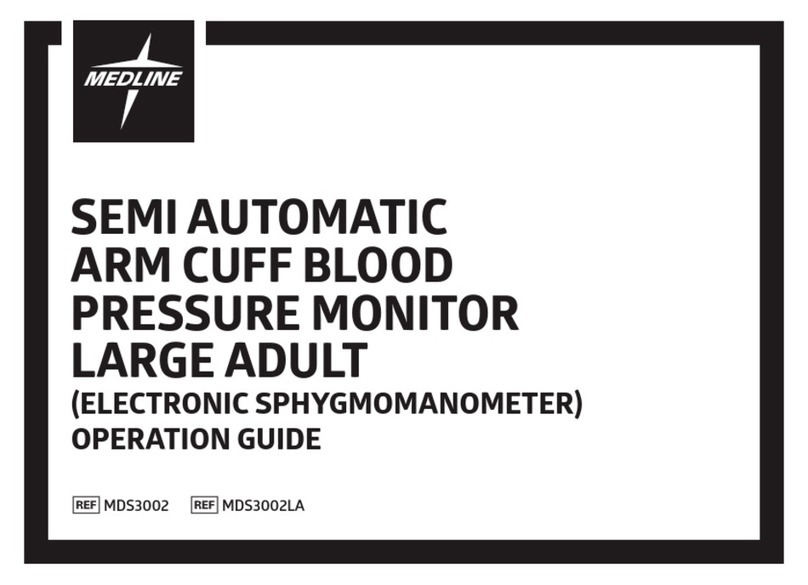
3Microlife BP B3 AFIB EN
What is Atrial Fibrillation (AF)?
Normally, your heart contracts and relaxes to a regular beat.
Certain cells in your heart produce electrical signals that cause the
heart to contract and pump blood. Atrial fibrillation occurs when
rapid, disorganized electrical signals are present in the heart’s two
upper chambers, called the atria; causing them to contract irregu-
larly (this is called fibrillation). Atrial fibrillation is the most common
form of heart arrhythmia. It often causes no symptoms, yet it
significantly increases your risk of stroke. You’ll need a doctor to
help you control the problem.
Who should be screened for Atrial Fibrillation?
AF screening is recommended for people over 65 years of age,
since the chance of having a stroke increases with age. AF
screening is also recommended for people from the age of 50
years who have high blood pressure (e.g. SYS higher than 159 or
DIA higher than 99) as well as those with diabetes, coronary heart
failure or for those who have previously had a stroke.
In young people or in pregnancy AF screening is not recom-
mended as it could generate false results and unnecessary
anxiety. In addition, young individuals with AF have a low risk of
getting stroke as compared to elder people.
Risk factors you can control
Early diagnosis of AF followed by adequate treatment can signifi-
cantly reduce the risk of getting stroke. Knowing your blood pres-
sure and knowing whether you have AF is the first step in proactive
stroke prevention.
For more information visit our website: www.microlife.com/afib.
2. Using the device for the first time
Inserting the batteries
After you have unpacked your device, first insert the batteries. The
battery compartment 7 is on the bottom of the device. Insert the
batteries (4 x 1.5 V, size AA), thereby observing the indicated
polarity.
Setting the date and time
1. After the new batteries are fitted, the year number flashes in the
display. You can set the year by pressing the M-button 3. To
confirm and then set the month, press the MAM button 4.
2. Press the M-button to set the month. Press the MAM button to
confirm and then set the day.
3. Follow the instructions above to set the day, hour and minutes.
4. Once you have set the minutes and pressed the MAM button,
the date and time are set and the time is displayed.
5. If you want to change the date and time, press and hold the
MAM button for approx. 3 seconds until the year number starts
to flash. Now you can enter the new values as described above.
Selecting the correct cuff
Microlife offers different cuff sizes. Select the cuff size to match the
circumference of your upper arms (measured by close fitting in the
centre of the upper arm).
Information for the doctor on frequent appearance of the
atrial fibrillation indicator
This device is an oscillometric blood pressure monitor that also
analyses pulse irregularity during measurement. The device is
clinically tested.
The AFIB symbol is displayed after the measurement, if atrial
fibrillation occurred during measuring. If the AFIB symbol
appears after having performed a full blood pressure measure-
ment episode (triplicate measurements), the patient is advised
to perform another measurement episode (triplicate measure-
ments). If the AFIB symbol appears again, we recommend the
patient to seek medical advice.
If the AFIB-symbol appears on the screen of the blood pressure
monitor, it indicates the possible presence of atrial fibrillation.
The atrial fibrillation diagnosis however, must be made by a
cardiologist based on ECG interpretation.
Keep the arm still during measuring to avoid false readings.
This device may not or wrongly detect atrial fibrillation in
people with pacemakers or defibrillators.
In the presence of atrial fibrillation the diastolic blood pres-
sure value may not be accurate.
In the presence of atrial fibrillation using MAM-mode is
recommended for more reliable blood pressure measure-
ment.
Cuff size for circumference of upper arm
S 17 - 22 cm

